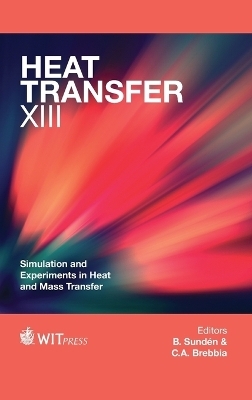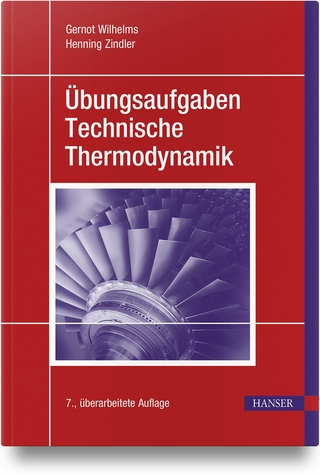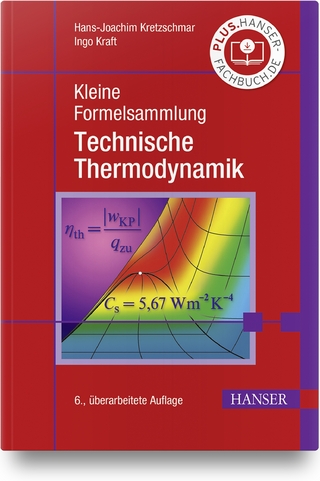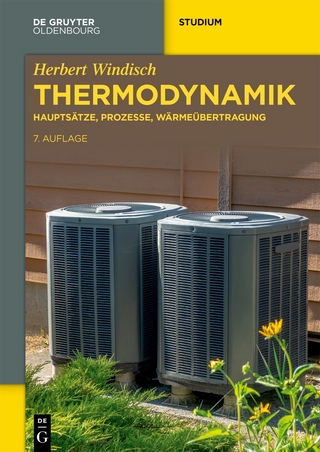
Heat Transfer XIII
WIT Press (Verlag)
978-1-84564-794-0 (ISBN)
Tremendous advancements have been achieved during recent years due to improved numerical solution methods for non-linear partial differential equations, turbulence modelling advancements and developments of computers and computing algorithms to achieve efficient and rapid simulations. Nevertheless, to further progress in computational methods requires developments in theoretical and predictive procedures - both basic and innovative - and in applied research. Accurate experimental investigations are needed to validate the numerical calculations. Topics covered include: Heat Transfer Enhancements; Heat Recovery; Heat Exchangers; Heat Transfer in Energy Producing Devices; Heat and Mass Transfer; Convection and Radiation; Multiphase Flow Heat Transfer; Modelling and Experiments; Experimental and Measuring Technologies.
Contents Section 1: Heat transfer enhancements Ribbed double pipe heat exchanger: experimental analysis; A numerical study of heat diffusion using the Lagrangian particle SPH method and the Eulerian Finite-Volume method: analysis of convergence, consistency and computational cost; The effect of flow pulsation on the heating performance of panel radiators in central heating systems: CFD analysis; Entropy generation analysis of engineered heat transfer fluids under a constant surface temperature; The investigation of radiative heat transfer across molten mold flux film during the continuous casting of steels; An investigation into the influence of micro structures on nucleate boiling processes; Carbon nanotubes suspended in ethylene glycol yield nanofluids with enhanced heat transfer properties Section 2: Heat recovery The thermal conductance of collection tubes in geothermal energy systems; Waste energy recovery analysis of a diesel engine exhaust system; The simulation of a Rankine based Waste Heat Recovery system for a heavy duty diesel engine Section 3: Heat exchangers Analysis of the boundary conditions for pyramidal spine fins in extended surface heat transfer; An experimental investigation into the effects of fin structure and surface type on the efficiency of heat exchangers used for dehumidification; A concept for the integrated 3D flow, heat transfer and structural calculation of compact heat exchangers Section 4: Heat transfer in energy producing devices A numerical simulation of the combustion processes of wood pellets; A heat transfer model of a PV panel integrated with a "Rainscreen Cladding System"; Heat transfer optimization in a fluidized bed biomass gasification reactor; The efficiency of a two-phase nozzle as a motion force for power generation from low-temperature resources; Identification of the objective function for optimization of a Seasonal Thermal Energy Storage system Section 5: Heat and mass transfer The computational simulation of coupled heat and moisture transport as a tool for predicting the degradation of sedimentary porous rocks in historical masonry; CFD simulation and analysis of a gas to water two-phase closed thermosyphon-based heat exchanger; Simulation of binary mixtures condensation using higher order methods; Finite element analysis of the sap flow measurement method with continuous needle heating in the sapwood of trees; The thermal and mechanical performance of cement-based composites with enhanced thermal insulation properties Section 6: Convection and radiation A comparison of the efficacy of greenhouse gas forcing and solar forcing; A parallel finite-volume spatial/angular agglomeration multigrid method for radiative heat transfer computation; Conditioning systems by radiant surfaces: comparative analysis of thermal ceramic panels versus the conventional systems in a museum; The underhood aerothermal management of leakage zones: temperature measurements Section 7: Multiphase flow heat transfer The thermal performance of thermosyphons employing nanofluids; Flow instabilities in a vertical tube reboiler; The experimental determination of heat transfer and pressure drop during condensation in a plate heat exchanger with corrugated plates; The cavitation phenomenon: a literature survey; Experiments and volume-of-fluid (VOF) simulations of a three-fluid dam-break Section 8: Modelling and experiments Modelling of the thermal behaviour of heat pipes; The modelling of air supply system efficiency in refrigerated vehicles; Heat flux from stagnation-point hydrogen-methane-air flames: experiment and modelling; Sensitivity analysis of the Kunzel model: application to the study of the hygrothermal transfer in a tuffeau wall; Numerical simulation for the drying shrinkage of autoclaved aerated concrete; Characterization of the temperature dependent behavior of snappy phenomenon by the switching-off of GaAs power diode structures; The temperature reduction of components in the induction hobs of domestic kitchens by numerical and visualization models; Fuel temperature estimation and energy balance within an UAV integral wing fuel tank; A numerical analysis of heating tissue using the two-temperature model Section 9: Experimental and measuring technologies Quantitative measuring methods applied for the mixing phenomena of film cooling; The experimental determination of the thermal conductivity of melting chocolate: thermal resistance analogies and free convection boundary conditions; Is the performance of a virtual sensor employed for the prediction of the ledge thickness inside a metallurgical reactor affected by the thermal contact resistance?
| Erscheint lt. Verlag | 2.7.2014 |
|---|---|
| Reihe/Serie | WIT Transactions on Engineering Sciences ; 83 |
| Zusatzinfo | illustrations (black and white) |
| Verlagsort | Southampton |
| Sprache | englisch |
| Maße | 156 x 234 mm |
| Themenwelt | Naturwissenschaften ► Physik / Astronomie ► Thermodynamik |
| Technik ► Elektrotechnik / Energietechnik | |
| ISBN-10 | 1-84564-794-7 / 1845647947 |
| ISBN-13 | 978-1-84564-794-0 / 9781845647940 |
| Zustand | Neuware |
| Haben Sie eine Frage zum Produkt? |
aus dem Bereich


